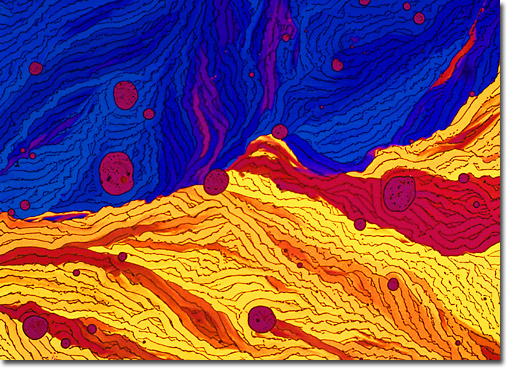Capsaicin

|
If you like it hot, capsaicin is your ticket to a mouth-blasting, sweat-breaking spicy cuisine. Of the six capsaicinoid compounds produced by chili peppers, all of which contribute to the spiciness of the pepper, capsaicin adds the most wallop. And while capsaicin is popular -- and occasionally worshipped -- for its mouth burning, eye watering, and breath-taking effects, scientists are learning that this phytochemical offers more than just culinary delights. It's actually good for you. No pain, no gain, some aficionados of the heartwarming pods would say. Chilies (genus Capsicum), the only plants that contain capsaicin, are natives of South America, but have achieved worldwide distribution and popularity since the Spanish introduced them to Europe over 500 years ago. Capsaicin has been found to possess several beneficial health qualities. It has antibacterial properties, which may help people with conditions such as stomach ulcers, rather than injuring them further as doctors have traditionally thought. It's also a general digestive aid, increasing secretions of saliva and gastric juices, and promoting intestinal activity. In studies with animals, cancer researchers have found that capsaicin keeps certain carcinogens from binding to DNA, giving it merit as a potential anti-cancer drug. Currently, the best-known medical use for capsaicin is as a topical painkiller, fighting fire with fire as it were. The very quality that causes the burning sensation also causes nerve endings to release mediators, chemical substances that inform the brain about pain or inflammation. When applied directly to an area that is causing pain, capsaicin empties the stores of inflammatory mediators from the nerve endings, so they can no longer transmit pain signals to the brain. Pepper creams with capsaicin have been developed and are being used as painkillers for conditions such as herpes (shingles), arthritis, and neuralgia. Capsaicin is also used for defense in pepper sprays, such as Mace, but there are questions about its safety in that application. There have been reported cases of victims developing respiratory problems after being sprayed. In some instances, deaths have even occurred from respiratory arrest. |
© 1995-2025 by Michael W. Davidson and The Florida State University. All Rights Reserved. No images, graphics, software, scripts, or applets may be reproduced or used in any manner without permission from the copyright holders. Use of this website means you agree to all of the Legal Terms and Conditions set forth by the owners.
This website is maintained by our
|